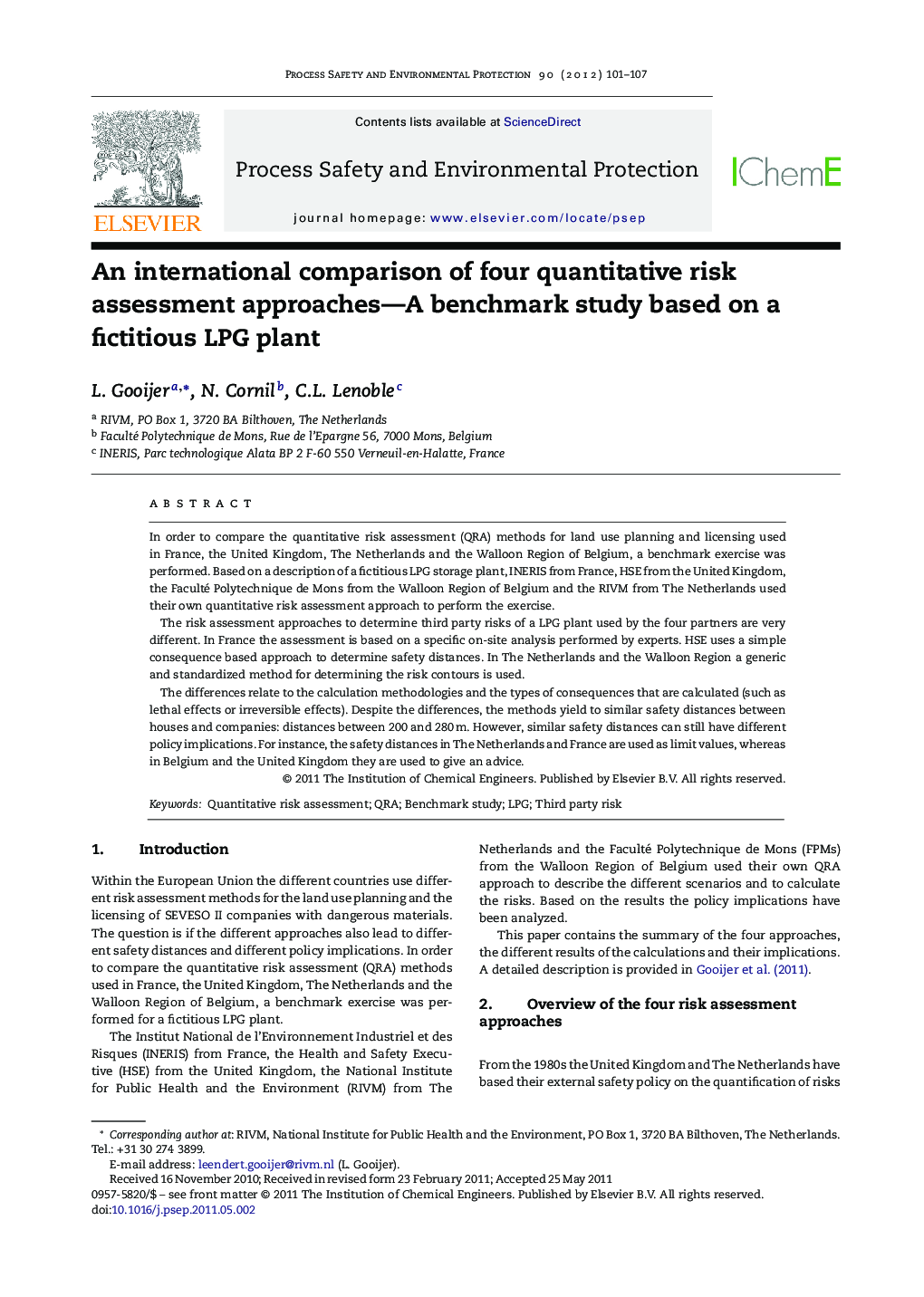| Article ID | Journal | Published Year | Pages | File Type |
|---|---|---|---|---|
| 588460 | Process Safety and Environmental Protection | 2012 | 7 Pages |
In order to compare the quantitative risk assessment (QRA) methods for land use planning and licensing used in France, the United Kingdom, The Netherlands and the Walloon Region of Belgium, a benchmark exercise was performed. Based on a description of a fictitious LPG storage plant, INERIS from France, HSE from the United Kingdom, the Faculté Polytechnique de Mons from the Walloon Region of Belgium and the RIVM from The Netherlands used their own quantitative risk assessment approach to perform the exercise.The risk assessment approaches to determine third party risks of a LPG plant used by the four partners are very different. In France the assessment is based on a specific on-site analysis performed by experts. HSE uses a simple consequence based approach to determine safety distances. In The Netherlands and the Walloon Region a generic and standardized method for determining the risk contours is used.The differences relate to the calculation methodologies and the types of consequences that are calculated (such as lethal effects or irreversible effects). Despite the differences, the methods yield to similar safety distances between houses and companies: distances between 200 and 280 m. However, similar safety distances can still have different policy implications. For instance, the safety distances in The Netherlands and France are used as limit values, whereas in Belgium and the United Kingdom they are used to give an advice.
Graphical abstractFigure optionsDownload full-size imageDownload high-quality image (25 K)Download as PowerPoint slideFigure optionsDownload full-size imageDownload high-quality image (263 K)Download as PowerPoint slideHighlights► Four risk assessment approaches (QRA) are compared and they are very different. ► The differences relate to the calculation methods and the calculation effects. ► Despite the differences, the final safety distances are quite similar. ► But similar safety distances still have different policy implications.
